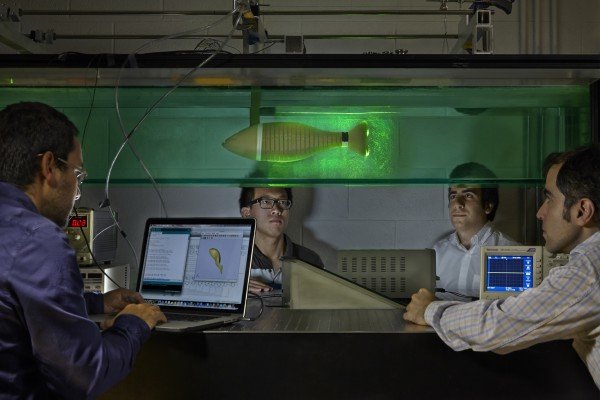North Carolina State University researchers are using video game technology to remotely control cockroaches on autopilot, with a computer steering the cockroach through a controlled environment. The researchers are using the technology to track how roaches respond to the remote control, with the goal of developing ways that roaches on autopilot can be used to map dynamic environments — such as collapsed buildings.
The researchers have incorporated Microsoft’s motion-sensing Kinect system into an electronic interface developed at NC State that can remotely control cockroaches. The researchers plug in a digitally plotted path for the roach, and use Kinect to identify and track the insect’s progress. The program then uses the Kinect tracking data to automatically steer the roach along the desired path.
The program also uses Kinect to collect data on how the roaches respond to the electrical impulses from the remote-control interface. This data will help the researchers fine-tune the steering parameters needed to control the roaches more precisely.
“Our goal is to be able to guide these roaches as efficiently as possible, and our work with Kinect is helping us do that,” says Dr. Alper Bozkurt, an assistant professor of electrical and computer engineering at NC State and co-author of a paper on the work.
“We want to build on this program, incorporating mapping and radio frequency techniques that will allow us to use a small group of cockroaches to explore and map disaster sites,” Bozkurt says. “The autopilot program would control the roaches, sending them on the most efficient routes to provide rescuers with a comprehensive view of the situation.”
The roaches would also be equipped with sensors, such as microphones, to detect survivors in collapsed buildings or other disaster areas. “We may even be able to attach small speakers, which would allow rescuers to communicate with anyone who is trapped,” Bozkurt says.
Bozkurt’s team had previously developed the technology that would allow users to steer cockroaches remotely, but the use of Kinect to develop an autopilot program and track the precise response of roaches to electrical impulses is new.
The interface that controls the roach is wired to the roach’s antennae and cerci. The cerci are sensory organs on the roach’s abdomen, which are normally used to detect movement in the air that could indicate a predator is approaching — causing the roach to scurry away. But the researchers use the wires attached to the cerci to spur the roach into motion. The wires attached to the antennae send small charges that trick the roach into thinking the antennae are in contact with a barrier and steering them in the opposite direction.
The paper, “Kinect-based System for Automated Control of Terrestrial Insect Biobots,” will be presented at the Remote Controlled Insect Biobots Minisymposium at the 35th Annual International Conference of the IEEE Engineering in Medicine and Biology Society July 4 in Osaka, Japan. Lead author of the paper is NC State undergraduate Eric Whitmire. Co-authors are Bozkurt and NC State graduate student Tahmid Latif. The research was supported by the National Science Foundation.
Story Source:
The above story is reprinted from materials provided by North Carolina State University, Matt Shipman.





